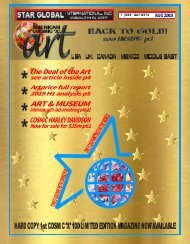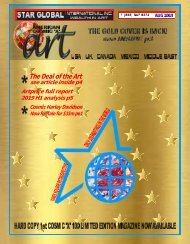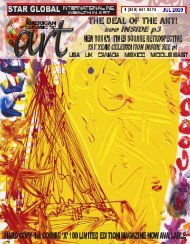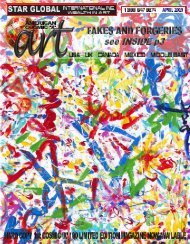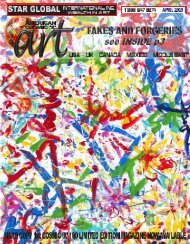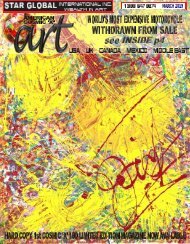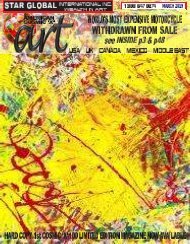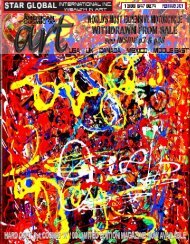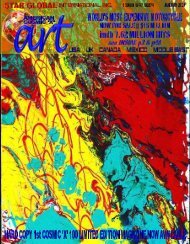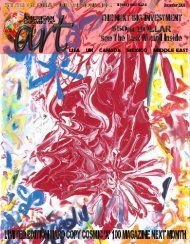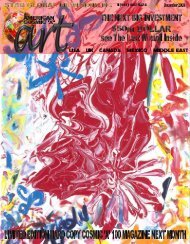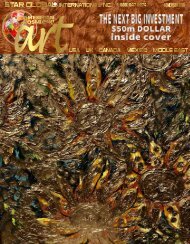SG MAG APR 2018 MAIN1s
Create successful ePaper yourself
Turn your PDF publications into a flip-book with our unique Google optimized e-Paper software.
I’m used to hearing older Sha Na Na<br />
fans say “That was my era” about the early rock n’ roll<br />
years. I’ve understood in a limited way, but now that I’m<br />
old enough to savor my own coming of mature age and<br />
its historical setting, the ripening of post-World War Two<br />
American confidence and our winning the Cold War sit<br />
more solidly as defining elements than the overly<br />
revered Woodstock festival or the classic movie Grease,<br />
both of which I performed in. More than cultural landmarks<br />
like those, the defining impression I have of “my<br />
era” has turned out to be the freewheeling exuberance<br />
of expression that I witnessed in New York City and Los<br />
Angeles as the century ripened. There was never a lack<br />
of remarkable creative characters in either of the towns<br />
where I spent most of my time.<br />
I had bought into the hippy sandals earthiness of the 60s<br />
completely enough to find myself repulsed by the “me<br />
decade” garishness that came prancing in with the disco<br />
glitter of the 70s. Yet the 1970s turned out to be the<br />
decade for television stardom and peak earnings for me<br />
and my rock n’ roll group ShaNaNa. It was also when<br />
the “misery index” worsened for my countrymen so as to<br />
bring their rejecting Jimmy Carter’s presidency and<br />
favoring Ronald Reagan’s claim that big government was<br />
“the problem.” Then followed the “morning in America”<br />
1980s with their economic growth and the disintegration<br />
of Soviet Communism, and it was evident that “the<br />
American century” could turn out to be, despite all the<br />
sporadic heartbreak and disorder, actually a valid<br />
descriptive phrase. Freewheeling ambition, excess, spiritual revivalism, and controversy were so common that<br />
we hardly took notice, and the flamboyance in the art of a young Jack Armstrong (even in the entourage of a<br />
celebrated Andy Warhol) could go un-noticed too. It caught my notice as a compelling embodiment of the<br />
spirit of the unfolding age that is “my era” only here in the new century.<br />
Seems to me, what we collect in art should reflect the frivolous side of ourselves along with the more<br />
pensive. I find both, to my surprise, in Jack Armstrong’s work. His paintings’ stunning richness of hue, before<br />
we knew computer graphics would be able to mimic it ever in our lifetime, typified our late-cold-war-era<br />
brashness. His casually hiding his own name in plain sight, and hiding some little-understood names of other<br />
things in plain site- - it’s a playful permissiveness that’s just bulls-eye on that brashness. And in my painting,<br />
titled “Tulemagic,” I find a glimpse of it that requires a gaze, again and yet again. I enjoy how it always<br />
provokes friends’ reactions, and for my own part, I’ve even recorded a song about it.<br />
7






